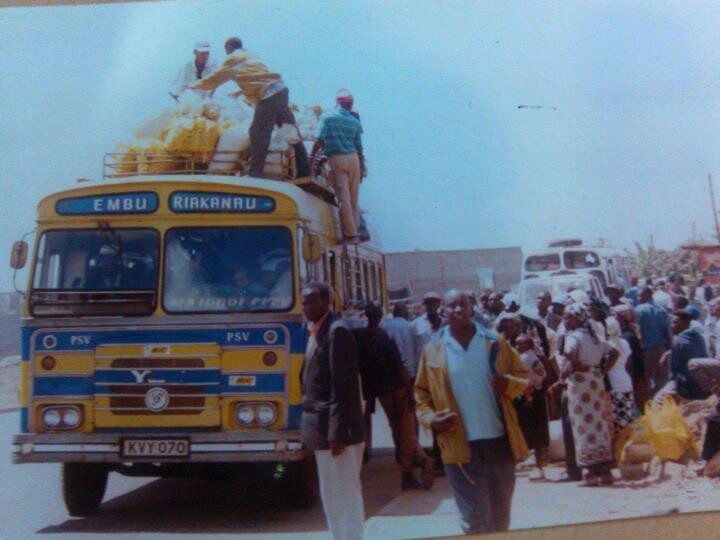Many years post-invention of the wheel, Matatus (a name for public transport vehicles in Kenya) came to be. Read about the origin here. As many of you may recall, Kenya Bus Service used to be the only mode of transport in the city of Nairobi for a long time. A number of entrepreneurs felt it not right for Kenya Bus Company to rule the scenes in public transport.
Then, transport was mainly from Nairobi Eastlands where majority Africans lived. So, a few people came up with ideas and started private transport services and charged 30 cents only, to any place you traveled within Nairobi. 30 cents in the native Gikuyu language is Mang’otore Matatu thus the name Matatu.

Riakanau image by Winnie Njeru on Pinterest
This served as much help to poor African workers who trekked by foot to work from Eastlands’ estates such as Hamza, Makadara, Maringo, Mbotela and other places to town. Ksh.30cents in Kikuyu dialect is Mang’otore Matatu thus the name Matatu.
In the 80s and early 90s, at the slopes of Mt.Kenya, were kings of the road namely the minibuses, vans & customized pick-up trucks, Peugeot 504s and 404s that served as PSVs (Public Service Vehicles). You cannot mention them all and forget to rope in their then reigning god-father, Riakanau the bus!
The bus drew the name ‘Riakanau’ from a sub-location located in the southern tip of Embu County in Kenya. Its rumored that the owner hailed from that locality and that he had a fleet of buses of the same make, going by the same name and boasting of the same colors.
Literally, Riakanau was a ramshackle-cum-bus that was as fast as a…? It could hardly beat a bicycle when it came to speed. Its journeys began at cock’s crow. It took not less than five hours to get to Nairobi from Embu via Mwea. It cat-drove along Nairobi – Embu Highway as if the entire day was at its disposal. Its fares were always a third of the normal fares charged by other matatus of the day.
It was the most preferred choice of transport to Nairobi for the rural folk in Kirinyaga and Embu. The bus had a wide clientele. There always were sacks of dry maize on the roof carrier, others of sweet potatoes, a group of several bewildered goats tied together heading for a not so romantic date with the city butcher, a number of calves and chicken mashed up together at the rear and underneath luggage compartments.
In its hall-like cabin, was always an expectant mother fighting for breath and peace at the rear seat section, crammed with noise makers while the village shopkeeper with his beer belly occupied the front passenger seat, enjoying ample leg-room and fresh air. In the gallery, strangers were always busy chatting and catching up while the local teachers of the booze deliberated how they would pass by Njuguna’s and other boreholes around the city for two for the road, before catching the same bus back home. The bus always ran full house.
